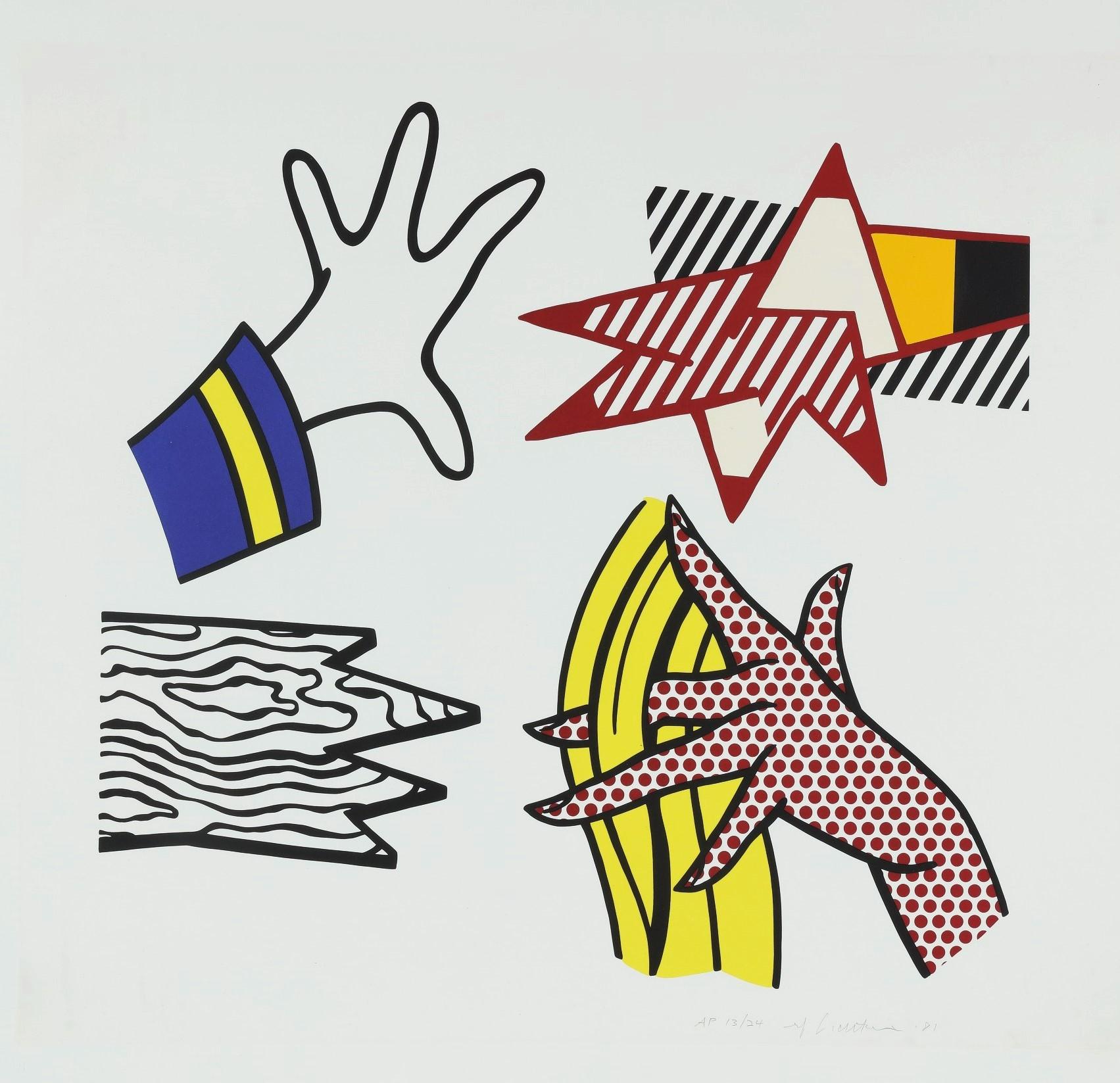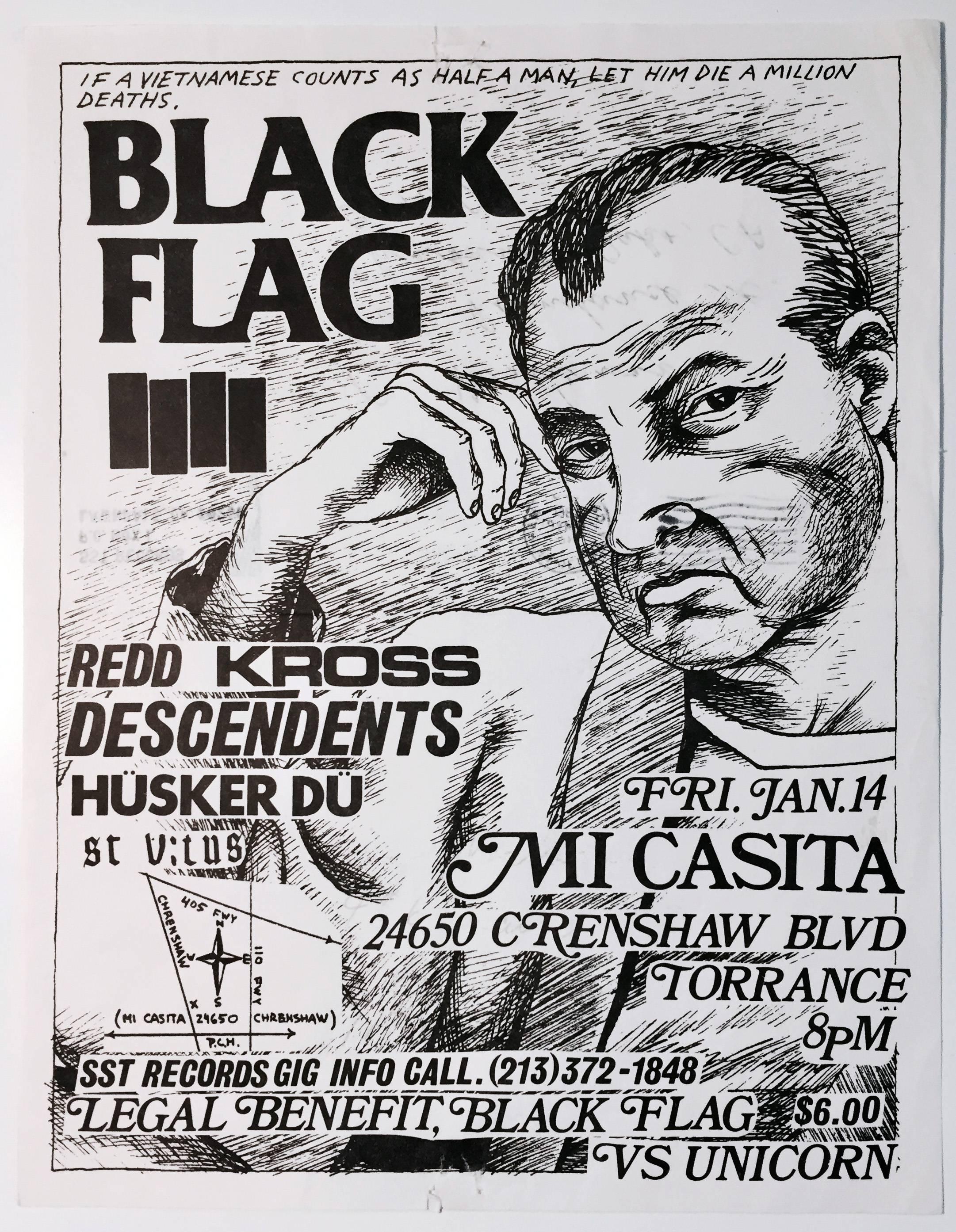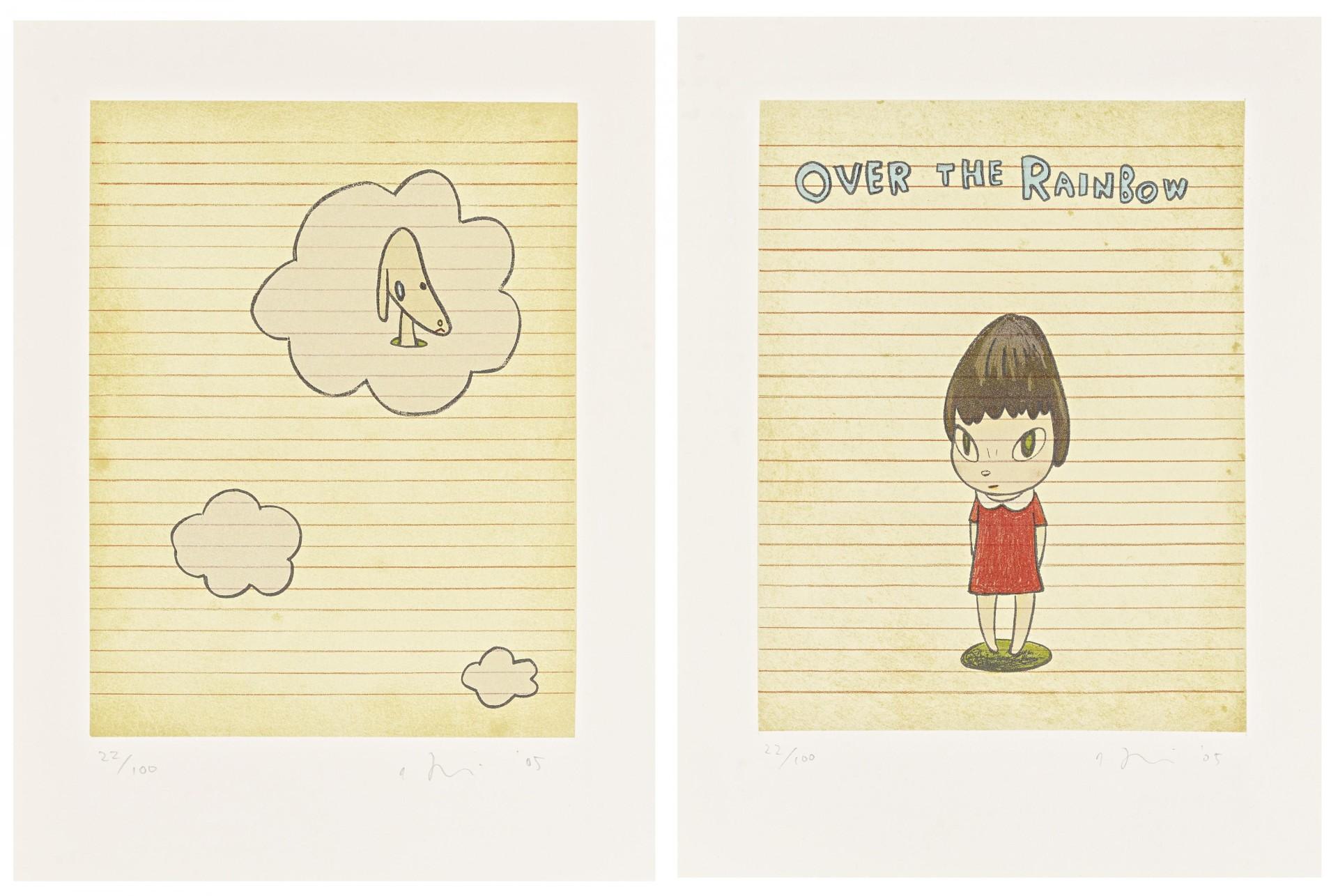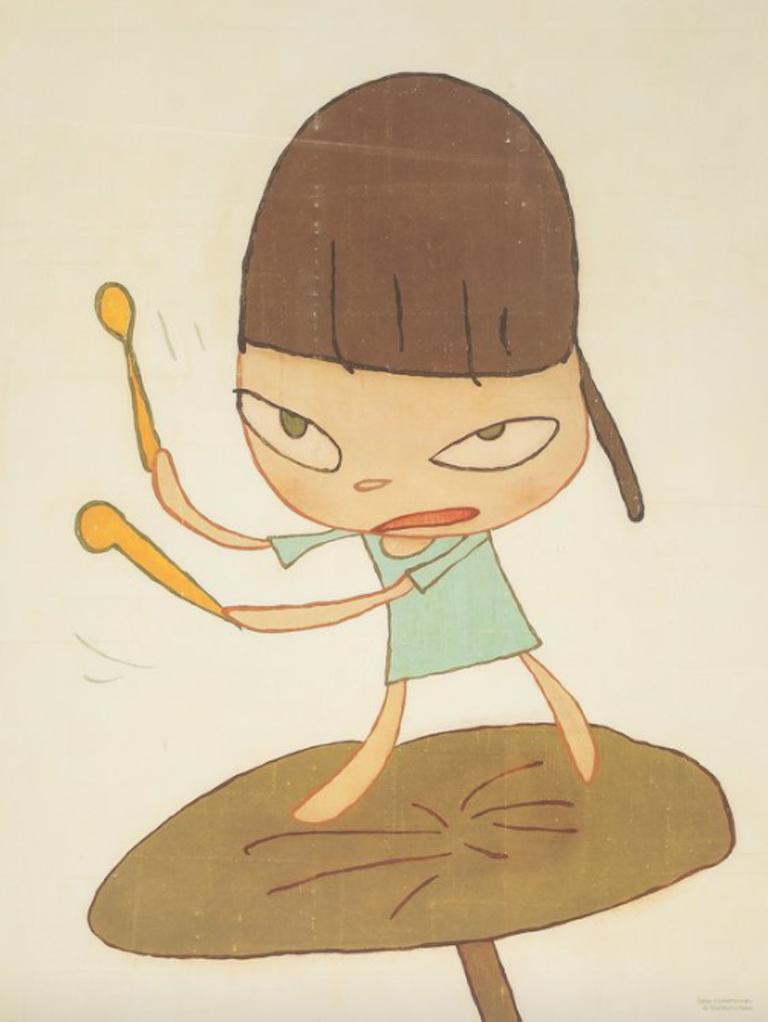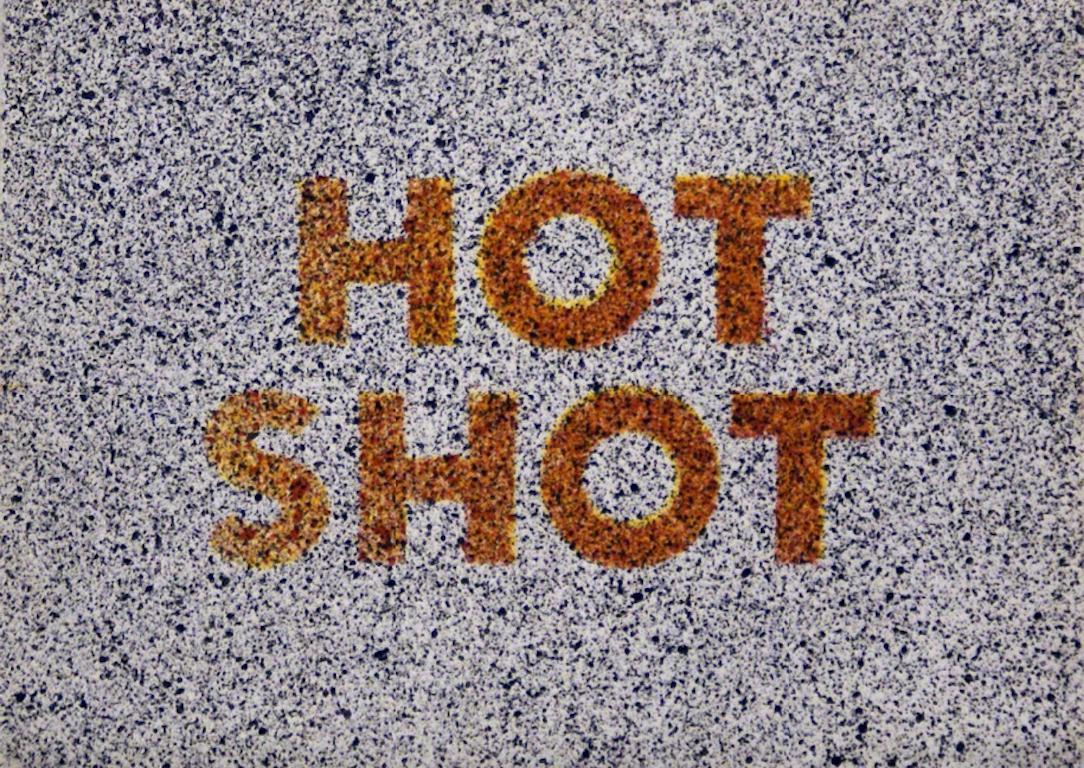Items Similar to Device
Want more images or videos?
Request additional images or videos from the seller
1 of 4
Jasper JohnsDevice1971 - 72
1971 - 72
About the Item
TECHNICAL INFORMATION:
Jasper Johns
Device
1971 - 72
Lithograph
39 1/2 x 29 in.
Edition of 62
Pencil signed and numbered
Accompanied with COA by Gregg Shienbaum Fine Art.
Condition: This work is in excellent condition.
Frame: This work is framed in an aluminum frame.
ABOUT THIS WORK:
Device is an important work from Japser Johns’ gray period, as it is derived from his famous painting Device (1962-63), which shows his experimentation with mechanism and its relation to the artist’s hand.
In the early 1960's, Johns introduced a new process-driven motif referred to as device that he used to make his works. He would apply paint with a studio or household object rather than a paint brush, and then often affix those objects to the canvas. For Johns, the device whether ruler, wooden slat or broom is an extension of the artist’s hand, much like the paint brush.
Works from John’s gray period are highly sought after. For Johns, the color gray, serves as a means of emphasizing the physical properties of an object by draining it of color. However, his use of gray as a color draws attention to the condition of gray itself, elevating it to more than a color, but also as an idea and material.
ABOUT THE ARTIST:
In the late 1950's, Jasper Johns emerged as force in the American art scene. His richly worked paintings of maps, flags, and targets led the artistic community away from Abstract Expressionism toward a new emphasis on the concrete. Johns laid the groundwork for both Pop Art and Minimalism. Today, his prints and paintings set record prices at auction.
Born and raised in Allendale, South Carolina, Jasper Johns grew up wanting to be an artist. He studied briefly at the University of South Carolina before moving to New York in the early Fifties. After a visit to Philadelphia, with his good friend Robert Rauschenberg, to see Marcel Duchamp's painting, The Large Glass (1915-23), Johns became very interested in his work. Duchamp had revolutionized the art world with his readymades — a series of found objects presented as finished works of art. This irreverence for the fixed attitudes toward what could be considered art was a substantial influence on Johns.
The modern art community was searching for new ideas to succeed the pure emotionality of the Abstract Expressionists. Johns' paintings of targets, and maps, invited both the wrath and praise of critics. Johns' early work combined a serious concern for the craft of painting with an everyday, almost absurd, subject matter. The meaning of the painting could be found in the painting process itself. It was a new experience for gallery goers to find paintings solely of such things as flags and numbers. The simplicity and familiarity of the subject matter piqued viewer interest in both Johns' motivation and his process. Johns explains: There may or may not be an idea, and the meaning may just be that the painting exists.
In 1958, gallery owner Leo Castelli visited Rauschenberg's studio and saw Johns' work for the first time. Castelli was so impressed with the 28-year-old painter's ability and inventiveness that he offered him a show on the spot. At that first exhibition, the Museum of Modern Art purchased three pieces, making it clear that at Johns was to become a major force in the art
Over the past fifty years Johns has created a body of rich and complex work. His rigorous attention to the themes of popular imagery and abstraction has set the standards for American art. Constantly challenging the technical possibilities of printmaking, painting and sculpture, Johns laid the groundwork for a wide range of experimental artists. Today, he remains at the forefront of American art, with work represented in nearly every major museum collection.
- Creator:Jasper Johns (1930, American)
- Creation Year:1971 - 72
- Dimensions:Height: 45 in (114.3 cm)Width: 36 in (91.44 cm)Depth: 6 in (15.24 cm)
- More Editions & Sizes:Edition of 62Price: $20,250
- Medium:
- Movement & Style:
- Period:
- Condition:This work is in excellent condition.
- Gallery Location:Miami, FL
- Reference Number:1stDibs: LU53831662913
Jasper Johns
Jasper Johns is an American painter, sculptor and printmaker born on May 15, 1930. He eventually became one of America's best known post–Abstract Expressionists and Minimalists.
Johns's name is most often associated with pictorial images of flags and numbers and Pop art subjects that he depicted in Minimalist style with an emphasis on linearity, repetition and symmetry. He completed his first flag painting in 1955, alphabet subjects in 1956, sculpture in 1958 and lithographs in 1960.
Find original Jasper Johns art on 1stDibs.
About the Seller
5.0
Vetted Seller
These experienced sellers undergo a comprehensive evaluation by our team of in-house experts.
1stDibs seller since 2017
53 sales on 1stDibs
Typical response time: 9 hours
- ShippingRetrieving quote...Ships From: Miami, FL
- Return PolicyA return for this item may be initiated within 7 days of delivery.
More From This SellerView All
- American Dream #2By Robert IndianaLocated in Miami, FLTECHNICAL INFORMATION: Robert Indiana American Dream #2 1982 Screenprint on 4 separate sheets 26 3/4 x 26 3/4 in. each sheet (77 1//2 x 77 1/2 in. overall) A.P. of 9/15 (Artist's Pr...Category
1980s Pop Art Abstract Prints
MaterialsScreen
- Sinlag IIBy Victor VasarelyLocated in Miami, FLTECHNICAL INFORMATION: Victor Vasarely Sinlag II 1990 Cast paper relief in colors 29 3/4 x 29 3/4 in. Edition of 120 Pencil Signed and Numbered Acc...Category
1990s Pop Art Abstract Prints
MaterialsMixed Media, Handmade Paper
- Sajippe Kraka JoujeshBy Kenny ScharfLocated in Miami, FLTECHNICAL INFORMATION: Kenny Scharf Sajippe Kraka Joujesh 1998 Screenprint 40 x 46 in. Edition of 150 Pencil signed and numbered Condition: This work is in excellent conditionCategory
1990s Pop Art Abstract Prints
MaterialsScreen
- Spring, from Four Seasons of HopeBy Robert IndianaLocated in Miami, FLTECHNICAL INFORMATION: Robert Indiana Spring, from Four Seasons of Hope 2012 Silkscreen 35 x 29 1/2 in. Edition of 125 Pencil signed and numberedCategory
21st Century and Contemporary Pop Art Prints and Multiples
MaterialsScreen
- Autumn, from Four Seasons of HopeBy Robert IndianaLocated in Miami, FLTECHNICAL INFORMATION: Robert Indiana Autumn, from Four Seasons of Hope 2012 Silkscreen 35 x 29 1/2 in. Edition of 125 Pencil signed and numberedCategory
21st Century and Contemporary Pop Art Abstract Prints
MaterialsScreen
- Summer, from Four Seasons of HopeBy Robert IndianaLocated in Miami, FLTECHNICAL INFORMATION: Robert Indiana Summer, from Four Seasons of Hope 2012 Silkscreen 35 x 29 1/2 in. Edition of 125 Pencil signed and numberedCategory
21st Century and Contemporary Pop Art Prints and Multiples
MaterialsScreen
You May Also Like
- Study of HandsBy Roy LichtensteinLocated in New York, NYCreated in 1981 as an original lithograph with screen-printing, Roy Lichtenstein’s, Study of Hands is hand-signed in pencil, dated and numbered, measuring 31 ¼ x 32 ¾ in. (79.5 x 83....Category
20th Century Pop Art Figurative Prints
MaterialsLithograph, Screen
- Raymond Pettibon Black Flag 1983By Raymond PettibonLocated in NEW YORK, NYRaymond Pettibon Black Flag 1983 (punk flyer): Black Flag at Mi Casita, Jan. 14, 1983: Offset-printed, 11 x 8.5 in. (28 x 21.6 cm). Black & white. Handbill / flyer for performance by Black Flag, Redd Kross, Descendents, Hüsker Dü, St. Vitus featuring original artwork by Raymond Pettibon. Rare. Good overall vintage condition. Hand written notes on the reverse. Unsigned from an edition of unknown. Raymond Pettibon Black Flag: Further Background: Raymond Pettibon is the foremost draftsman of his generation, and one of America’s most important contemporary artists. Approaching “high” and “low” subject matter with equal appetite and comfort, Pettibon plumbs the depths of American sexuality, politics, subcultures, mores, and intellectual histories through themes ranging from Shakespeare to Gumby, surfers to the Bible, baseball to German Romanticism. Raymond Pettibon popularized the American punk aesthetic with his designs that captured the riotous and chaotic character of punk such as this rare Black Flag flyer...Category
1980s Pop Art Prints and Multiples
MaterialsOffset, Lithograph
- 1971 Modernist Lithograph Redhead Pop Art Mod Fashionable Woman Richard LindnerBy Richard LindnerLocated in Surfside, FLRICHARD LINDNER (American. 1901-1978) Hand Signed limited edition lithograph with blindstamp Publisher: Shorewood-Bank Street Atelier for the Skowhegan School of Painting and Sculpture 29.25 X 22 inches Richard Lindner was born in Hamburg, Germany. In 1905 the family moved to Nuremberg, where Lindner's mother was owner of a custom-fitting corset business and Richard Lindner grew up and studied at the Kunstgewerbeschule (Arts and Crafts School since 1940 Academy of Fine Arts). From 1924 to 1927 he lived in Munich and studied there from 1925 at the Kunstakademie. In 1927 he moved to Berlin and stayed there until 1928, when he returned to Munich to become art director of a publishing firm. He remained there until 1933, when he was forced to flee to Paris, where he became politically engaged, sought contact with French artists and earned his living as a commercial artist. He was interned when the war broke out in 1939 and later served in the French Army. In 1941 he went to the United States and worked in New York City as an illustrator of books and magazines (Vogue, Fortune and Harper's Bazaar). He began painting seriously in 1952, holding his first one-man exhibit in 1954. His style blends a mechanistic cubism with personal images and haunting symbolism. LIndner maintained contact with the emigre community including New York artists and German emigrants (Albert Einstein, Marlene Dietrich, Saul Steinberg). Though he became a United States citizen in 1948, Lindner considered himself a New Yorker, but not a true American. However, over the course of time, his continental circus women became New York City streetwalkers. New York police uniforms replaced European military uniforms as symbols of authority.At a time when Abstract Expressionism was all the rage, Lindner’s painting went against the current and always kept its distance. His pictorial language of vibrant colours and broad planes of colour and his urban themes make him a forerunner of American Pop Art. At the same time, he owes the critical tone of his paintings to the influence of European art movements such as Neue Sachlichkeit and Dada. His first exhibition did not take place until 1954, by which time he was over fifty, and, interestingly, it was held at the Betty Parsons Gallery in New York, a venue associated with the American Expressionists. From 1952 he taught at the Pratt Institute, Brooklyn, from 1967 at Yale University School of Art and Architecture, New Haven. In 1957 Lindner got the William and Norma Copley Foundation-Award. In 1965 he became Guest Professor at the Akademie für Bildende Künste, Hamburg. His Ice (1966, Whitney Museum of American Art) established a connection between the metaphysical tradition and pop art. He did work on Rowlux which was used by a number of pop artists (most notably Roy Lichtenstein)The painting shows harsh, flat geometric shapes framing an erotic but mechanical robot-woman. His paintings used the sexual symbolism of advertising and investigated definitions of gender roles in the media. While influencing Pop Art (Andy Warhol, Tom Wesselmann and Claes Oldenburg amongst others) his highly colourful, hard-edge style seems to have brought him close to Pop Art, which he rejected. Nevertheless, he is immortalised on the cover of the Beatles record "Sgt. Pepper’s Lonely Hearts Club Band" (1967) as a patron of the pop culture. He also did a tapestry banner with the Betsy Ross Flag...Category
1970s Pop Art Abstract Prints
MaterialsLithograph
- Over the RainbowBy Yoshitomo NaraLocated in New York, NY2005 Set of two lithographs in colors, on wove paper Sheet: 16 1/8 x 12 1/4 in., each Edition of 100 Each signed, dated, and numbered in pencil, lower marginCategory
Early 2000s Pop Art Abstract Prints
MaterialsPaper, Lithograph
- Marching on a Butterbur LeafBy Yoshitomo NaraLocated in New York, NY2019 Offset lithograph in colors, on archival paper Sheet: 24 x 18 in. Edition of 1000 UnsignedCategory
2010s Pop Art Abstract Prints
MaterialsLithograph, Offset
- Hot ShotBy Ed RuschaLocated in New York, NY1973 Lithograph in colors Sheet: 8 3/10 x 6 in. (21 x 15.2 cm) Edition of 100 Signed, dated and numbered in pencil Unframed, mint conditionCategory
1970s Pop Art Abstract Prints
MaterialsLithograph
Recently Viewed
View AllMore Ways To Browse
Paint By Numbers Vintage Art
Johns Flag
Large Vintage World Maps
Vintage World Map Painting
Vintage Broom
Old Vintage World Map
Old World Vintage Maps
Old Vintage Map Of The World
Framed Vintage World Map
South America Vintage Map
Vintage Map South America
Jasper Johns 1971
Jasper Johns Flag
Jasper Johns Numbers
Jasper Johns Target
Jasper Johns Flag Print
Technics Jasper John
Old Brooms
